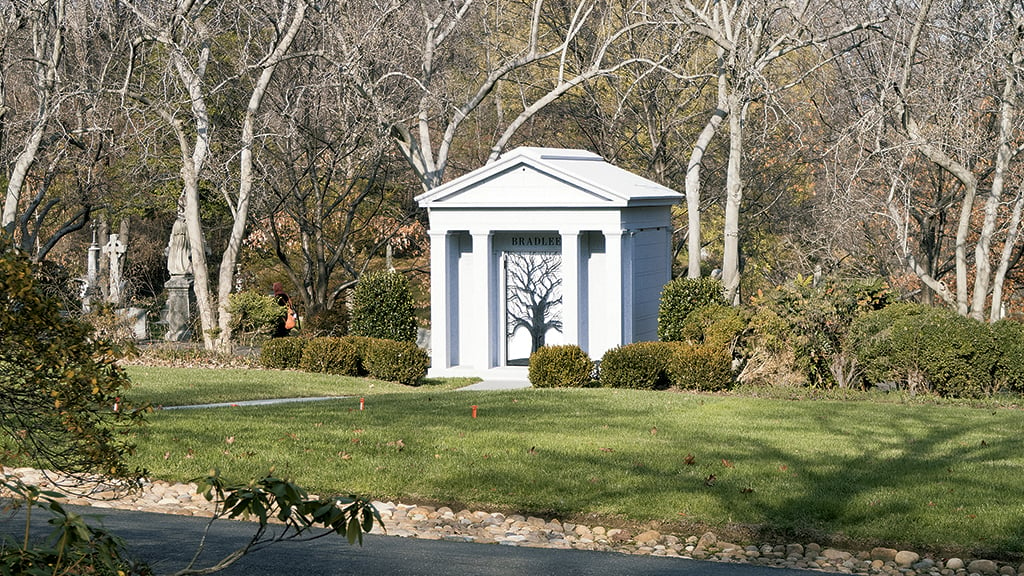In October, a full year after Washington’s elite crammed into National Cathedral for Ben Bradlee’s funeral, the former Washington Post executive editor was laid to rest at Georgetown’s Oak Hill cemetery. His neoclassical mausoleum, steps from Oak Hill’s 165-year-old Renwick Chapel, greets visitors with his name emblazoned below its pediment.
As solid as it appears, however, Bradlee’s vault is suddenly on shaky legal ground. And thanks to Georgetown’s famously cantankerous zoning politics, it’s unclear whether the legendary journalist will remain undisturbed.
In the months after Bradlee was honored at the cathedral, his wife, former Post writer Sally Quinn, commissioned construction according to plans by architect Stephen Muse. The mausoleum soon caught the attention of passersby.
Not all who saw it were pleased. Oak Hill is prime real estate, containing the graves of former Secretary of State Dean Acheson, Corcoran Gallery of Art founder William Corcoran, and longtime Post publisher Katharine Graham, among others. (Graham’s former home on R Street now has a view of her onetime employee’s resting place.) There are imposing memorials among these markers, but what rankled families of Oak Hill residents and some neighbors was the proximity of Bradlee’s grave to the cemetery entrance.
“You go through the gates now and ‘Bradlee’ reads like a billboard,” says Charles A. Birnbaum of the Cultural Landscape Foundation, which advocates for historic outdoor spaces. “That’s a major impact on the arrival experience at Washington’s most historic rural cemetery.”
A week before Bradlee was interred, Birnbaum, who had raised his objections with DC’s Department of Consumer and Regulatory Affairs, got a letter from Oak Hill president George Hill explaining that Bradlee’s plot was one of several new mausoleum sites sold near the gatehouse. “Oak Hill does not and cannot survive on charity alone,” Hill wrote.
Birnbaum wasn’t mollified. In his investigation, he found that no one had filed for a building permit, a required step that triggers an architectural review by the Old Georgetown Board, a federal panel that examines designs and issues recommendations to the DCRA—as Muse, who sits on the board, was likely aware. (Muse didn’t respond to messages. Quinn and cemetery officials declined to comment.)
As of press time, according to a District official, no permit had been filed. Instead, the cemetery contacted agency officials for a sit-down. “At this point,” says Matt Orlins, DCRA’s legislative-and-public-affairs director, “the property owner and DCRA’s general counsel’s office are meeting to try and resolve the remaining questions.”
If a permit is filed, the case will move to the Old Georgetown Board, which historically has been tough on deviations from the status quo. Thomas Luebke, a secretary of the US Commission of Fine Arts, says the board plans to consider the structure as if it hadn’t yet been built, leaving the DCRA to decide its fate. Birnbaum says moving the mausoleum “should be on the table.” This being Georgetown, a board hearing would be certain to include some contentious public dispute.
This article appears in our January 2016 issue of Washingtonian.


![Luke 008[2]-1 - Washingtonian](https://www.washingtonian.com/wp-content/uploads/2017/10/Luke-0082-1-e1509126354184.jpg)















